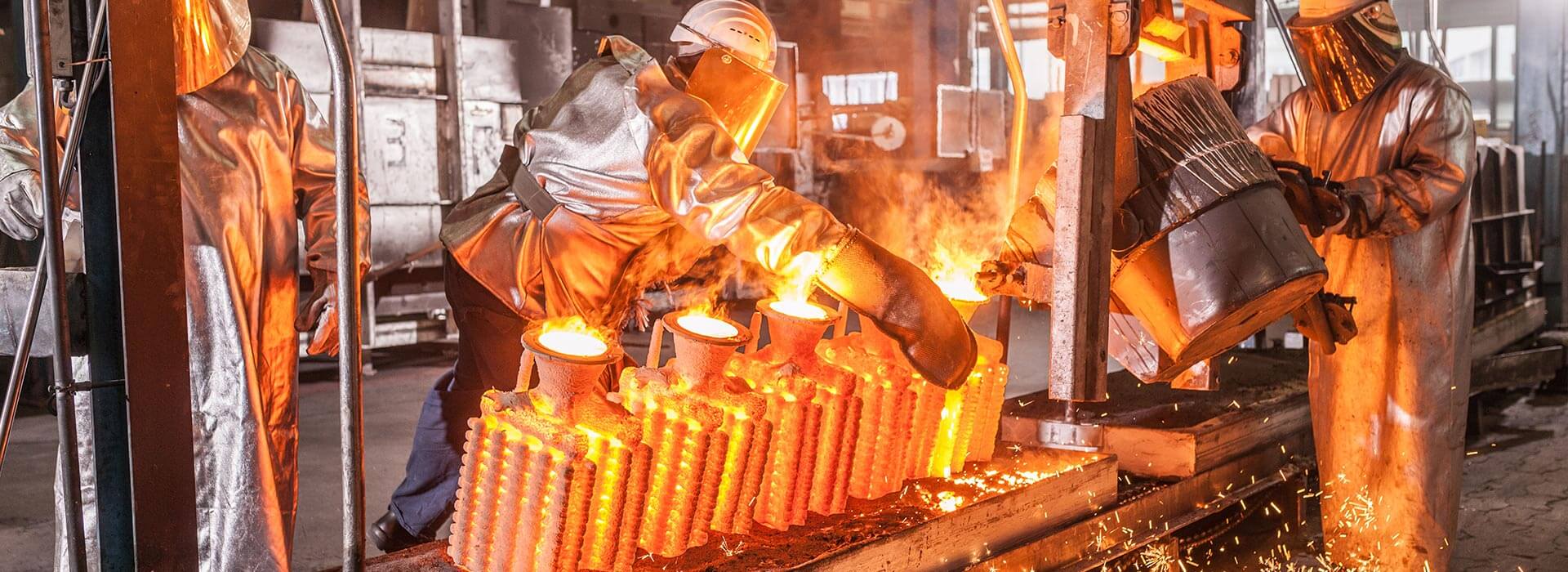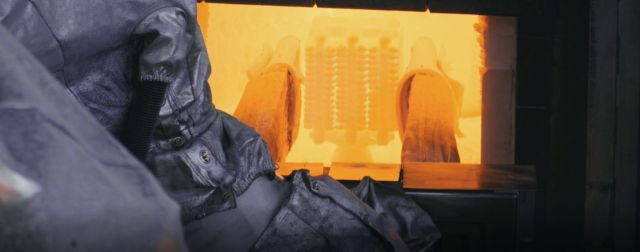Industry 4.0 is finding its way also into foundries. Topics such as digitalization and automation are increasingly determining the daily work routine in companies. The BLANK Group therefore started the development of an automated casting process as a future project several years ago. At the end of 2018 it was finally possible for the first time at BLANK to cast by means of an automated casting machine. Over the past two years, this system has been further optimized and so today two robots handle the ceramic shell and the melt simultaneously and carry out the casting process together.
This approach is unique worldwide, reports Ralf Jedrysiak, head of the casting production section at BLANK. "The aim was to create relief for the employees in this physically demanding work area. In addition, the standardization of the processes enables a repeatability that is reflected in the factors quality and speed.” The newly created automated production cell is controlled in series production by only one production employee. First this employee is responsible for preparing the shells which are preheated in a circular furnace inside the cell, which is happening at the same time the melt is prepared for casting. After the liquid metal has been checked by the in-house metallurgical laboratory the casting process can begin. The employee starts the process outside the casting cell by pressing a button. From this point on the robots work completely autonomously within the closed-off production area.
After the employee at the plant has given the start signal, the first robot reaches for the crucible with the hot melt on which the second robot places the approx. 900 - 1150 °C hot shell. Both robots then turn the crucible and the shell synchronously so that the approximately 1600 °C hot melt runs into the shell. "The coordination and synchronous movement of two robots in the casting process was a particular challenge," says Jedrysiak. "The developed production cell is a pioneer for new machine technologies in the casting process." This was developed over many years in cooperation between the casting technology department and the company's own plant planning department. Product and process engineer Bartosz Debek was part of this development process from the very beginning. "The challenge was especially the handling of the shell by the robots in connection with the high temperature during the casting process. We first had to gain a feeling for the robots and their movements and adjust them to the materials involved, such as the sensitive shell and the hot metal”, says Debek. Besides the shell, the coordination of the robots with each other, as well as the feeding of the melt and the automated placing of the shells had to be planned and adjusted in detail. After two years of development Mr. Jedrysiak considers the developed casting cell to be ready for series production. “Meanwhile we have expanded the concept and can use it for a variety of tree structures. Today, we already cover the same variety of alloys via the casting robots as in atmospheric casting. Nevertheless, the robot cell still offers possibilities for expansion and optimization concepts.” Currently the development department is working, for example, on refining the gripping concept, but also on automating the necessary logistics activities.
In the BLANK image film on youtube the robots can be seen in action: https://www.youtube.com/watch?v=euNCqNUp9vU


